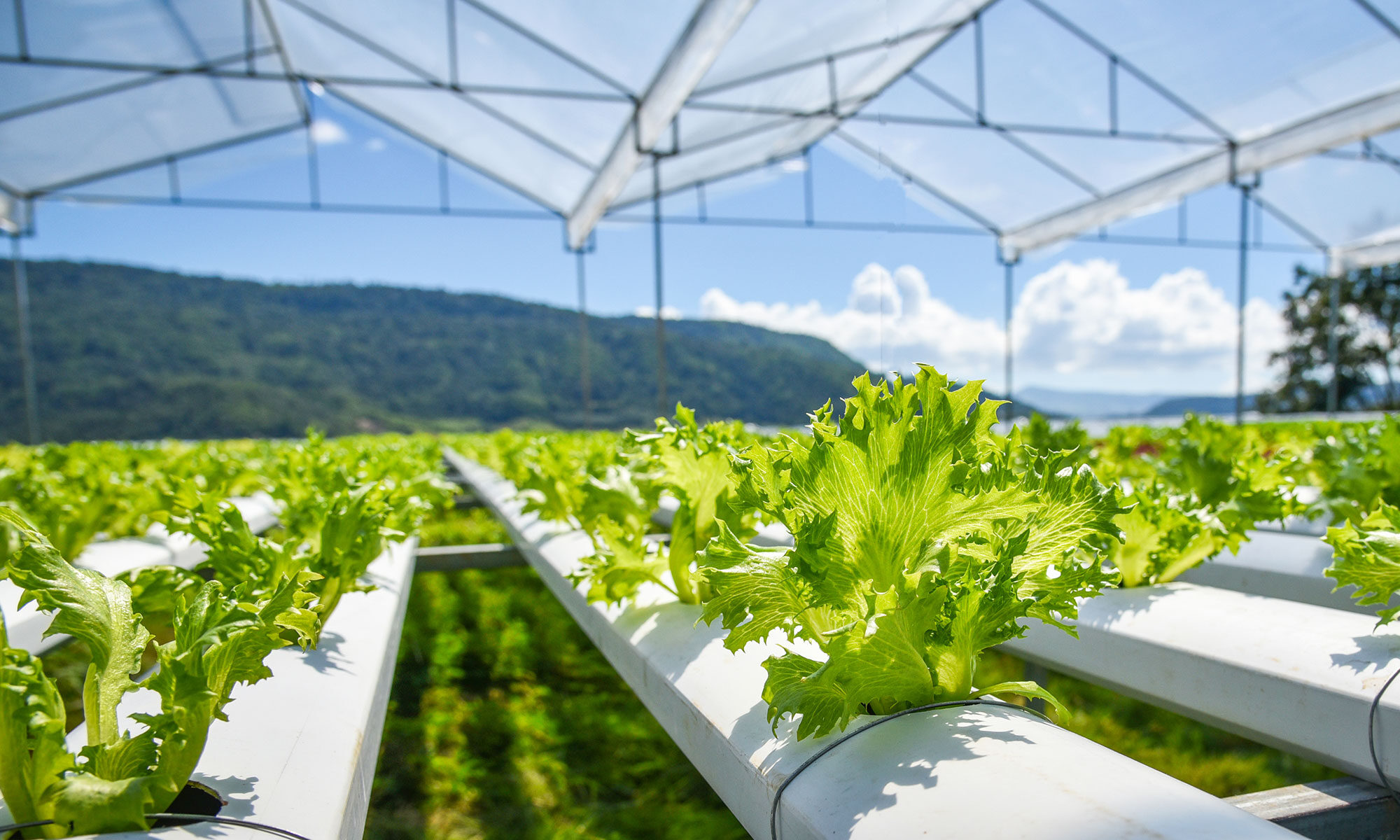Our agriculture system as we know it needs to change. We see an enormous amount of waste in current practices through using too much water, too many pesticides that hurt the neighboring environment, and the waste of produce through imperfection or being pest-ridden.
Addressing Climate Change Impacts on the Sporting Calendar
This, combined with flagging and in some cases stagnant yield increases in soil systems across the world, will soon require sweeping and rapid changes in growing methods. As the global population continues to increase, food production will rise and our methods of growing should change as well.
Better Methods
There are methods available to us today to not only change the way we grow produce for the better, but also increase yields in a smaller space. Vertical farming through hydroponics or aeroponics gives us the opportunity to grow larger amounts of produce in seemingly unavailable spaces. Rooftops and indoor areas such as old warehouses can be used to grow plants that are stacked on top of each other to farm a consistent crop that produces year-round and quickly. Such measures would require less water and energy, are more pest resistant and can help alleviate some of the logistical trouble of transporting produce to and from farms to cities everywhere.
Hydroponics and aeroponics are increasingly popular cultivation methods among both commercial growers and research scientists. They confer several advantages, with the foremost being their water use efficiency. Some studies suggest up to 70% and 95% less water usage for hydroponics and aeroponics, respectively. In a 2015 study conducted in Arizona, an extremely dry place in the United States, it was found that hydroponically grown lettuce required 10 times less water as a system than soil-based lettuce crops.
This is particularly important based on the similarities between the climates of Arizona and Marrakech, a city in Morocco. While this study found that energy usage of a hydroponic farm was significantly higher than soil-based farms, this could be nearly completely offset by reducing the amount of supplemental lighting used in favor of currently available solar power technologies.
Another advantage of greenhouse hydroponic production is season independence, where a grower would be able to produce several harvests year-round by shielding the crops from seasonal changes through the use of LED lighting and heating and cooling of the greenhouse space. By utilizing existing ideas for a closed-loop hydroponic system, which can be easily constructed in any area of the world, it is possible to reuse nearly all water and nutrients that are not taken up and transpired by plants.
One study conducted in Indonesia suggested the use of such a system to more actively regulate water usage and increase the cost-efficiency of hydroponic production in a nutrient film technique (NFT) hydroponic system. Water efficiency and full-year production and harvest are attractive, and depending on the design of the greenhouse, pest resistance can be built in as well through the engineering of the facility to not be conducive to insect or microbial population accumulation.
While reusing nutrients and water can be economically and environmentally attractive (in reducing agricultural runoff, one of the main sources of pollution in the world), care must be taken to ensure consistent yield through several cycles of harvest. If not properly treated, reused nutrient solution can accumulate several phytotoxic (plant-harming) organic acids that are released from the roots of any plant in order to regulate the microbial population of its roots. Studies have shown that the use of activated charcoal can help to mitigate some of the damaging effects of these chemicals, though further research is needed to determine a commercially viable solution.
Another promising area of research in hydroponics and aeroponics is a possible disease resistance conferred by the physical stress of constant flow or aerosolization. One study found that in aeroponic systems, the microbial population of the roots remained almost entirely distinct from the population of the nutrient solution reservoir, suggesting very little, if any, microbial population overlap.
Another recent study attempted to use a chemical intervention solution to mitigate possible E. coli contamination of lettuce crops grown in NFT systems. Though the chemical intervention was unsuccessful, a notable result was the complete lack of colonization of root tissue and no uptake of harmful bacteria into the vegetative tissues of any of the tested crops. Though these studies are recent, they suggest that hydroponics may be much more pathogen-resistant than previously thought, leading to considerably lower contamination risk for hydroponic growers and safer food for consumers.
Benefits Are Many
The benefits of hydroponic and aeroponic farming are many, and emerging technologies are making the ease of access to such systems considerably lower, paving the way for a future generation of amateur and commercial growers to begin to farm in any place, at any time.
Africa has experienced wonderful agricultural and economic growth in some regions, but with current methods, this is not sustainable. At a recent pre-summit event of the US Agency for International Development (USAID) titled, “Agricultural Transformation for Sustainable and Resilient Food Systems,” there was a discussion regarding the need for change in the direction of agriculture in the future. There is a need for an increase in productivity in the land already used for agriculture, which will then lead to greater and more sustainable economic growth. Increasing productivity through new agricultural technologies would have lasting impacts on farmers, communities, and societies everywhere.
As per a 2020 World Bank report, “Harvesting Prosperity: Technology and Productivity Growth in Agriculture,” there is particular weight given to innovation and the need to support this innovation through connection to markets. We believe that using new hydroponic and aeroponic technology as well as vertical farming can increase productivity, foster a closer connection for city residents to their food production and experience continued growth in the agricultural sector.
From Africa to the World
Across the world, we are conducting unsustainable practices and the use of land for agricultural growth. The High Atlas Foundation (HAF), an organization for the lasting and prosperous development of Morocco, has been working to address this problem. It has been following responsible procedures and using new technology to increase efficiency primarily through women and youth-led campaigns. In addition, it has been working to address the problem of climate change through monitoring trees that HAF has planted for carbon offsets.
There is a necessity in not only Africa but across the world to accept and utilize new technology to help increase the productivity of the land we have while also saving our planet. The advent of hydroponics, aeroponics and vertical farming is a great method to try to combat the pressing issue of how we are going to grow plants when there is little water and little surface area. This gives the possibility for many methods of urban farming, including vertical and hydroponics in rooftops and many unused areas that could be used for growing.
We only have one world, so being good stewards and living sustainable lives is imperative. Expanding use of the technology of hydroponics and vertical farming can allow the small grower to have much stronger financial gain while also helping alleviate the burden agriculture places on the planet. There is only so much space in the world, but we can always grow up.
*[The authors are interns at the High Atlas Foundation.]
The views expressed in this article are the author’s own and do not necessarily reflect Fair Observer’s editorial policy.
Support Fair Observer
We rely on your support for our independence, diversity and quality.
For more than 10 years, Fair Observer has been free, fair and independent. No billionaire owns us, no advertisers control us. We are a reader-supported nonprofit. Unlike many other publications, we keep our content free for readers regardless of where they live or whether they can afford to pay. We have no paywalls and no ads.
In the post-truth era of fake news, echo chambers and filter bubbles, we publish a plurality of perspectives from around the world. Anyone can publish with us, but everyone goes through a rigorous editorial process. So, you get fact-checked, well-reasoned content instead of noise.
We publish 2,500+ voices from 90+ countries. We also conduct education and training programs
on subjects ranging from digital media and journalism to writing and critical thinking. This
doesn’t come cheap. Servers, editors, trainers and web developers cost
money.
Please consider supporting us on a regular basis as a recurring donor or a
sustaining member.
Will you support FO’s journalism?
We rely on your support for our independence, diversity and quality.








Comment